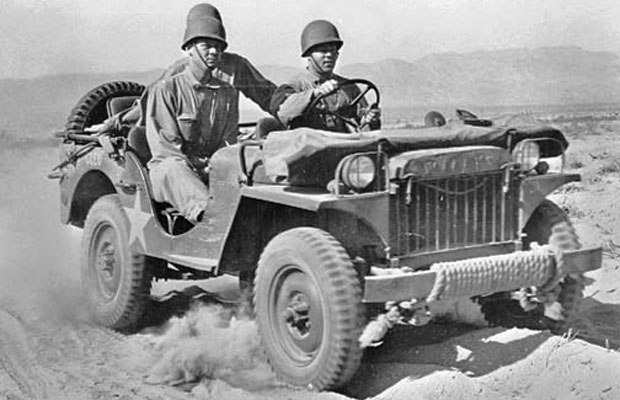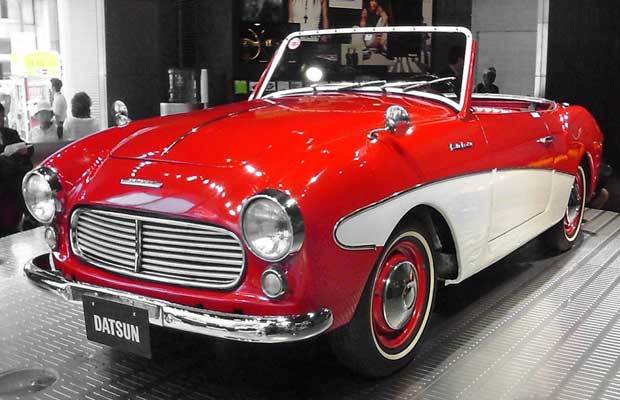Naming a car is a massive process. The name has to convey a certain image to the demographic it’s being marketed to and it has to be original enough to stand out. Great names like GT350 and Viper have interesting stories behind them. Some happened by chance, some were the product of exhaustive research and some names became famous by accident. If you ever wondered how the Stallion became the Starion and how GP became Jeep, then read further into this journey of automotive etymology.
Carroll Shelby played the numbers game
Possibly the fastest chicken farmer on Earth at one time, Carroll Shelby was also an active marketer and a clever businessman. Apparently, Shelby and his team were having a discussion on what to name their new racy version of the 1965 Mustang. After a lengthy debate, Shelby became disgruntled because he saw the discussion going nowhere. He asked someone to go out and measure the paces between his office and a neighboring building. When the distance turned out to be 350 paces, the name GT350 was born and it stuck.
The legendary GT500 was named in a similarly bizarre fashion. It’s rumored that Shelby simply wanted the biggest number on the side of a car. As Chevrolet already had 427 and MoPar had 440 on their cars, he felt that naming his car with a “500” would put it at the top of the heap.
Dial 901 for Porsche
Porsche presented its now iconic successor to the 356 at the 1963 Frankfurt Motor Show. Porsche sold 84 copies of its new car, dubbed the 901, before Peugeot objected to the name, as it held rights over three-digit numbered car names with “0” in the middle. Peugeot models at the time included the 404 and 403 and Peugeot still use this name system today. With Peugeot barring the use of 901, Porsche simply replaced the offending “0” with a “1” and the name 911 was born.
BMW 435i
Why does every BMW name end with “i”?
Few automotive naming schemes resemble alphabet soup more than BMW’s. But one constant in its often confounding names is that a lower case “i” can almost always be found near the end of the model name. Ever wondered how it got there?
The first BMW to feature an “I” was the 1967 BMW 2000TI. TI stood for “touring international” and note that it’s upper-case in this form. The lower case “i” as we know it was still a few years off. In 1969, BMW named its fuel-injected sports sedan the 2000ti for 2,000-cc touring international, injected bringing the lowercase “i” into BMW nomenclature.
Starting in the late 1970s, a lower case “i” was used at the end of a model designation to denote a fuel-injected engine (325i, 528i etc.). But as time went on, fuel injection became more and more common in cars until carburation was eradicated completely. There was no point in advertising that your car had fuel injection any more, but still the “i” clung to life.
Undoubtedly helped by the iPod, the “i” is now a strong part of BMW’s identity and new models like the i3 and i8 show that it won’t be going away any time soon.
Chevrolet Silverado 1500 Crew Cab LT 4×4
From trim level to country song favorite
Early pickups were designed as workhorses with little regard for marketing. Fitting their industrial purpose, many early GM trucks simply used various numbers and letters to denote drive type and payload capacity. But in 1975, the top-level trim on a Chevrolet pickup was the Silverado. It marked a shift toward marketing trucks to people who would have normally bought cars. The name Silverado carried on as a trim level for 24 years before becoming its own model in 1999. The name Silverado still represents Chevy trucks today and can be heard in countless country songs.
Where did the name “Jeep” come from?
The hardy Willy’s jeep (yes, lower case) is one of the most important cars of the 20th century. It helped win a world war and revolutionized 4x4s. But its official name was the Willy’s MB. Where did Jeep come from? Rather simply, the MB was commonly referred to as a General Purpose vehicle or GP. GP was eventually shortened from two syllables to one by calling it a jeep. There was also a character in contemporary Popeye cartoons named Eugene the Jeep whose resourcefulness and toughness is a contributing factor to the name’s popularity, some say. The name Jeep (uppercase) was trademarked in 1950 and has been a fixture of off-roading culture ever since.
1960-61 Datsun Fairlady.
Nissan Fairlady owes its name to Broadway
Today, the name Fairlady conjures images of Nissan/Datsun Zs with snarling straight-six engines. But it wasn’t always that way. Nissan introduced its first sports car in 1959 under the emotive name of S211. When Nissan released a revised sports car for 1961, it decided it needed a real name. The then-president of Nissan, Katsuji Kawamata, watched the Broadway musical My Fair Lady and was moved by the show and its popularity in America.
The name Fairlady was chosen to represent the car and all following Nissan Zs in the Japanese market. But Nissan decided that North American buyers would find the name to be too feminine for a sports car and the name 240Z was created for the North American market.
Ford vs. Ferrari… again
In 2011, Ferrari launched its new Formula One car, named the F150 as a nod to the 150th anniversary of the unification of Italy. Inevitably, Ford thought this was a little too close to its popular F-150 truck. After Ford threatened legal action, the car’s name was changed to the Ferrari 150°.
Does the Mitsubishi Starion owe its name to a garbled phone call?
This one’s a little murky, but legend has it that Mitsubishi meant to name its new turbocharged sport coupe the Stallion, possibly to fit in with its Colt in nomenclature. A garbled phone call between Japan and marketers in the U.S., however, allegedly saw the car being advertised as Starion. Mitsubishi also had some space-related names such as the Space Wagon, and some hypothesize that Starion could be the shortened form of Star of Orion. Name aside, the Starion is still one of the best 1980s sport coupes.
Flowers and crowns: How Toyota names its cars
Toyota names are very interesting in how they came to be. Corolla is part of a flower and Celica comes from adding Japanese influences to the English word “sleeker.” The name Yaris comes from a Greek goddess named Charis melded with the German agreement “ya” to form Yaris. Charis was supposedly a symbol of beauty and elegance.
The name Camry also isn’t as random as it sounds and has roots with the company going back almost 60 years. Camry is a phoneticized version of the Japanese word, kanmuri, meaning crown. This references Toyota’s long line of Crown sedans, which have been made since 1955.
www.carleasingconcierge.com





